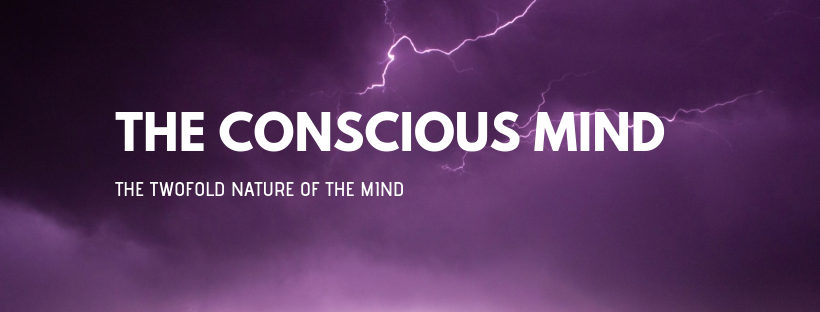The conscious mind
Having
acquired some understanding of the twofold nature of the mind let us now
further explore the workings of each component of the mind so that we can
acquire a better understanding of the mind and its workings. Let us start with
the corporeal mind or the temporal mind, or the mind that in most cases and
instances is known as the conscious mind simply because it is the mind that
operates while we are awake and continues to operate until the body is asleep,
induced or otherwise.
Before
we go any further, it’s worth briefly at least, explaining the practices of the
ancient Hindus to show the order of preference and to explain where the
emphasis lies with regards to faith. As far as Hindu ascetics and monks are
concerned, the latter mind or the subconscious mind, is far more important than
the former mind or the conscious mind.
The
early Hindus were first and foremost ascetics i.e. they existed first in the
meditative or the transcendental state and many of their ancient cities for
example the Mohenjo Daro and Harappa cities were built to facilitate worship
and this is made all the more evident in the way the cities were built and
structured.
The
Mohenjo Daro and Harappa cities or the Indus Valley Civilization was the first
civilization in the world or the earliest civilization in history to have a
sanitation system and cleanliness not only of the mind but also of the body is
important in the Hindu faith, and the legacy that has been left behind by the
Indus Valley cities is still alive in contemporary Hinduism.
Initially
the conscious mind was the subservient mind and the Hindus in their ancient
civilizations spent most of their time in the meditative or contemplative state
and the conscious mind only came into play when they needed to fulfill bodily
requirements and activities related to that for example, eating and fulfilling
other duties that perpetuated existence like tilling the fields, or ensuring
that there was sufficient water for the crops - both the Mohenjo Daro and
Harappa cities had a complex and sophisticated irrigation system.
However
with the passage of time, other factors, many of them external, began to
influence the ancient people who inhabited these cities and that led to a
collapse of their ascetic way of life and the emphasis changed to a more temporal
or a more corporeal existence and this change triggered or perpetuated the
eventual collapse of numerous ancient Hindu civilizations.
With
the passage of time, the conscious mind began to play a more prominent role and
it eventually usurped the role of the subconscious mind relegating it to the furthest
corners, and material needs began to take precedence and come to the forefront.
With each generation the reliance on the conscious mind increased and the use
of the subconscious mind decreased until it came to the point that most Hindus
were no longer aware of the twofold nature of the mind and confined it solely
to the realms of the purists and the ascetics.
In
addition to the labels given above, the conscious mind is also sometimes either
tagged or labeled the infant mind or the reactive mind and these tags aptly
describe the conscious mind. They are a reflection of the characteristics of
the conscious mind.
The
conscious mind is an infant not only in terms of age i.e. it only exists for
the duration of a lifetime but it is also an infant in terms of its cravings.
It is a very materialistic mind and when the needs of the senses are not
satisfied or fulfilled in tends to display a range of emotions that vary from
sadness to anger but rarely understands that there is a higher order that
sometimes dictates or influences the outcome of things.
The
conscious mind is easily disheartened and because of its unwillingness to
accept and make the best of any given situation it easily succumbs to illnesses
and a person who is overly reliant on the conscious mind will more often than
not fall victim to some sickness or the other and it tends to shorten one’s
lifespan. Therefore, the conscious mind has to be curtailed and just like a
child has to be told “no” to prevent any sort of harm from befalling the child;
the impulses of the conscious mind have to be likewise restricted.
The
conscious mind is also called the reactive mind because it reacts to situations
often without giving the matter much thought and sometimes because of its
impetuous nature it finds itself in a fix. Therefore, in any given situation it
is best to rein in the impulses of the conscious mind and to think the matter
through before acting.
The
conscious mind is more concerned with temporal existence and while it does
accept that there is life after death, it fails to explore it further because
it is afraid of what it might uncover and it is afraid that if the body it
belongs to spends more time exploring the other facets of existence, it might eventually
be relegated to a secondary role and the subconscious mind may return to the
forefront.
Copyright
© 2019 by Kathiresan Ramachanderam

Comments
Post a Comment